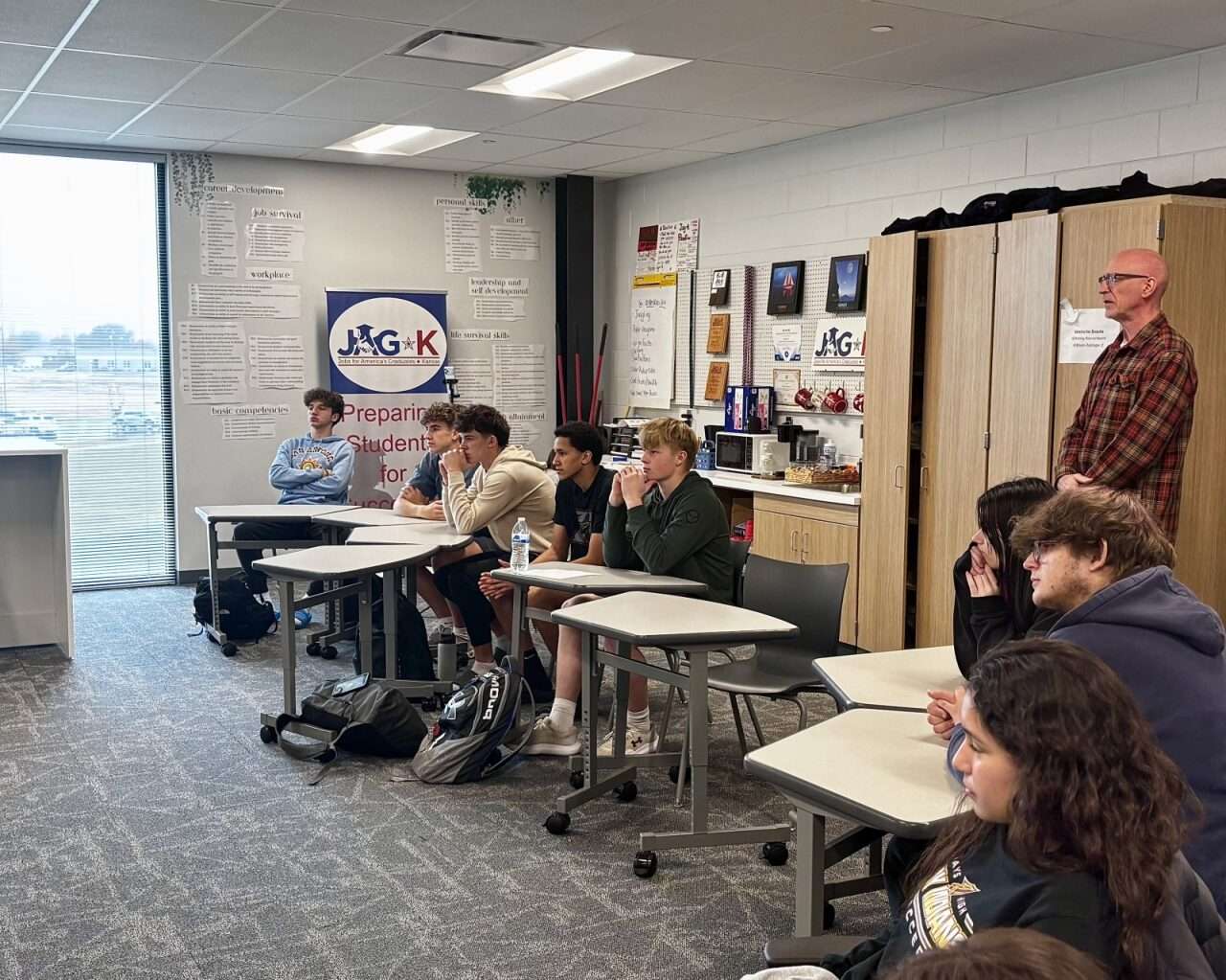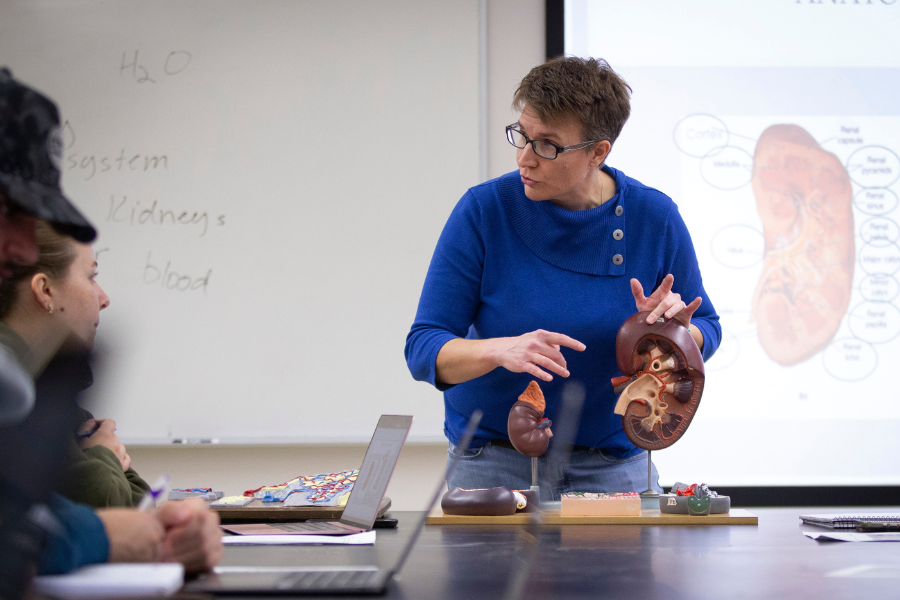A Second Chance At School for Zambia’s Dropouts – Newsweek

Report on the Digital School Project in Zambia: Advancing Sustainable Development Goals
Introduction: Addressing Educational Disparities in Line with SDG 4
In Zambia, an estimated 200,000 adolescents are currently not enrolled in school due to systemic barriers, directly challenging the achievement of Sustainable Development Goal 4 (SDG 4: Quality Education). Factors such as poverty, child labor, and early marriage impede educational access. To address this, a pilot initiative, the Digital School Project, was launched in December 2023. This project represents a strategic partnership between Zambia’s Ministry of Education, VVOB, and the Education Above All Foundation, embodying the principles of SDG 17 (Partnerships for the Goals). It aims to provide out-of-school adolescents in the Lusaka, Kafue, and Chibombo districts with a pathway back to formal education or vocational training, ensuring inclusive and equitable quality education for all.
Project Framework and Methodology
A Hybrid Model for Inclusive and Quality Education (SDG 4)
The project employs an innovative hybrid learning model designed to overcome the specific barriers faced by its target demographic. This approach directly supports several targets within SDG 4.
- Recruitment and Assessment: Adolescents are recruited from local communities and participate in two-week “boot camps” where their foundational literacy and numeracy skills are assessed, aligning with SDG 4.6 (achieve literacy and numeracy).
- Blended Learning: The core of the program combines self-paced digital learning on tablets with in-person support from trained facilitators. This flexibility is crucial for students who may have other responsibilities.
- Curriculum and Technology: Tablets are pre-loaded with the Zambian national curriculum for five core subjects. An online platform allows educators to track student progress, identify learning gaps, and assign supplementary work, ensuring a personalized and quality educational experience.
Overcoming Socio-Economic Barriers to Achieve SDG 1 and SDG 10
The project’s design directly confronts the root causes of school dropouts, contributing to SDG 1 (No Poverty) and SDG 10 (Reduced Inequalities).
- Financial Accessibility: By providing tablets and eliminating the need for costly study materials or daily travel, the project removes significant financial burdens that previously excluded these adolescents from education. This is a critical step in breaking the cycle of poverty.
- Flexible Learning Environment: The ability for students to learn at their own pace and time accommodates their diverse circumstances, promoting equity and reducing the inequality gap in educational access.
- Alignment with National Policy: The initiative supports Zambia’s 2021 “Education For All” policy, which aims to increase access by eliminating school fees, further reinforcing the national commitment to SDG 4.
Impact, Outcomes, and Future Projections
Measurable Success and Progress Towards SDG 4 Targets
The Digital School Project has demonstrated significant early success, providing tangible evidence of its effectiveness in achieving educational goals.
- Academic Achievement: The first cohort of students achieved an 80% pass rate on Zambia’s national Grade 7 examination, a key certification for completing primary education.
- Increased Enrollment: The program has successfully enrolled at least 1,600 students in its subsequent cohorts, indicating high demand and the project’s capacity to scale.
- Skill Development: Head teachers report notable progress in students’ literacy and communication skills, with many who were previously unable to write their names now able to read, write, and speak English.
Creating Pathways for Decent Work and Economic Growth (SDG 8)
The project’s long-term vision extends beyond primary education certification, aiming to foster sustainable futures for its participants.
- Project Goal: By its conclusion in June 2026, the project aims to have prepared over 3,500 adolescents for the Grade 7 examination.
- Further Opportunities: This certification provides an accredited pathway to further formal education, access to Technical Vocational Education and Training (TVET), or direct entry into employment. This directly contributes to SDG 8 (Decent Work and Economic Growth) by equipping youth with relevant skills.
- Empowerment and Aspiration: Participants report renewed confidence and ambition, with many now aspiring to professional careers such as medicine, demonstrating the project’s role in empowering youth to contribute actively to their communities. The project’s model is considered a scalable solution for other low-resource settings globally.
Analysis of SDGs, Targets, and Indicators
1. Which SDGs are addressed or connected to the issues highlighted in the article?
-
SDG 4: Quality Education
- The entire article is centered on the “Digital School Project,” an initiative designed to provide a “second chance at education” for adolescent dropouts in Zambia. It directly addresses the challenge of ensuring inclusive and equitable quality education.
-
SDG 1: No Poverty
- The article explicitly states that poverty is a primary reason for students dropping out. Malambo Mwachilenga’s father “could no longer afford the cost,” and the article notes that “most of Zambia’s out-of-school adolescents dropped out due to financial challenges.” By providing free, accessible education, the project tackles a key barrier created by poverty.
-
SDG 5: Gender Equality
- The article mentions “early pregnancy or marriage” as one of the reasons adolescents, particularly girls, are not in school. By offering a flexible educational model, the project provides opportunities for girls who may have dropped out due to these circumstances, thus promoting gender equality in educational access.
-
SDG 8: Decent Work and Economic Growth
- The article identifies “child labor” as a reason for school dropouts, with one student, Teddyson Chewe, having worked “selling charcoal and doing odd jobs.” The project aims to reduce the proportion of youth not in education or training by providing them with a path back to formal schooling or “onto vocational training,” which is crucial for future decent employment.
-
SDG 17: Partnerships for the Goals
- The success of the “Digital School Project” is explicitly attributed to collaboration. The article states it is a “partnership between Zambia’s Ministry of Education and the nonprofits VVOB and Education Above All Foundation,” showcasing a multi-stakeholder partnership to achieve educational goals.
2. What specific targets under those SDGs can be identified based on the article’s content?
-
Under SDG 4 (Quality Education):
- Target 4.1: “By 2030, ensure that all girls and boys complete free, equitable and quality primary and secondary education…” The project directly supports this by preparing adolescents for the “Grade 7 examination, which certifies completion of primary education.”
- Target 4.3: “By 2030, ensure equal access for all women and men to affordable and quality technical, vocational and tertiary education…” The project serves as a bridge, providing students with an “accredited pathway to further formal education, access to technical vocational education and training or onto employment.”
- Target 4.5: “By 2030, eliminate gender disparities in education and ensure equal access to all levels of education and vocational training for the vulnerable…” The project targets vulnerable adolescents who have dropped out for reasons including poverty, child labor, and early marriage, providing them with equal access to a second chance at education.
-
Under SDG 1 (No Poverty):
- Target 1.2: “By 2030, reduce at least by half the proportion of men, women and children of all ages living in poverty…” Education is a critical tool for poverty reduction. By removing financial barriers (“no need for them to travel daily to school or to pay for costly study materials”), the project helps families living in poverty and equips children with skills to break the cycle of poverty in the long term.
-
Under SDG 8 (Decent Work and Economic Growth):
- Target 8.6: “By 2020, substantially reduce the proportion of youth not in employment, education or training.” The project’s core mission is to re-engage the “estimated 200,000 adolescents in Zambia who are not in school,” directly addressing this target by moving them from a state of being out of education into a structured learning program.
- Target 8.7: “Take immediate and effective measures to… secure the prohibition and elimination of the worst forms of child labour…” The article mentions child labor as a reason for dropping out. The project provides a viable alternative to work for adolescents like Teddyson Chewe, thereby contributing to the elimination of child labor.
-
Under SDG 17 (Partnerships for the Goals):
- Target 17.17: “Encourage and promote effective public, public-private and civil society partnerships…” The project is a clear example of this target in action, described as a “partnership between Zambia’s Ministry of Education (public), and the nonprofits VVOB and Education Above All Foundation (civil society).”
3. Are there any indicators mentioned or implied in the article that can be used to measure progress towards the identified targets?
-
Number of Out-of-School Adolescents:
- The article states, “There are an estimated 200,000 adolescents in Zambia who are not in school.” This figure serves as a baseline indicator to measure the scale of the problem and the potential impact of scaling up the project.
-
Enrollment and Reach of the Program:
- Progress is measured by the number of students enrolled. The article mentions, “At least 1,600 students are taking part in the project’s second and third cohort,” and it “aims to have prepared more than 3,500 adolescents” by 2026. This directly indicates the project’s growing reach.
-
Educational Attainment/Completion Rate:
- A key success metric is the examination pass rate. The article provides a specific indicator: “80% of those students had passed Zambia’s national Grade 7 examination.” This measures the project’s effectiveness in helping students achieve primary education certification (relevant to SDG Indicator 4.1.2: Completion rate).
-
Improvement in Foundational Skills:
- The article implies progress in basic literacy and numeracy. A head teacher noted, “some of them, they couldn’t even write their names but now they’re able to read, they’re able to write, they’re able to even speak a bit of English.” This points to an improvement in proficiency levels (relevant to SDG Indicator 4.1.1: Proportion of children achieving minimum proficiency in reading and mathematics).
-
Use of Technology in Education:
- The project’s hybrid model relies on technology. The use of tablets for self-paced study and an “online platform for teachers” to track progress are indicators of leveraging technology to create inclusive learning environments (relevant to SDG Indicator 4.a.1: Proportion of schools with access to electricity, the Internet, computers, and adapted infrastructure for students with disabilities).
4. Summary Table of SDGs, Targets, and Indicators
| SDGs | Targets | Indicators |
|---|---|---|
| SDG 4: Quality Education |
|
|
| SDG 1: No Poverty |
|
|
| SDG 8: Decent Work and Economic Growth |
|
|
| SDG 5: Gender Equality |
|
|
| SDG 17: Partnerships for the Goals |
|
|
Source: newsweek.com

What is Your Reaction?
 Like
0
Like
0
 Dislike
0
Dislike
0
 Love
0
Love
0
 Funny
0
Funny
0
 Angry
0
Angry
0
 Sad
0
Sad
0
 Wow
0
Wow
0

















































:focal(1500,1000)/https://media.globalcitizen.org/a6/9a/a69a4720-d8a1-4715-b596-18738d03c05c/rotary_polio_hero_image.jpg?#)






/countries/sri-lanka/photo-credit---dmc-sri-lanka.tmb-1200v.jpg?sfvrsn=dc298bcc_1#)

















